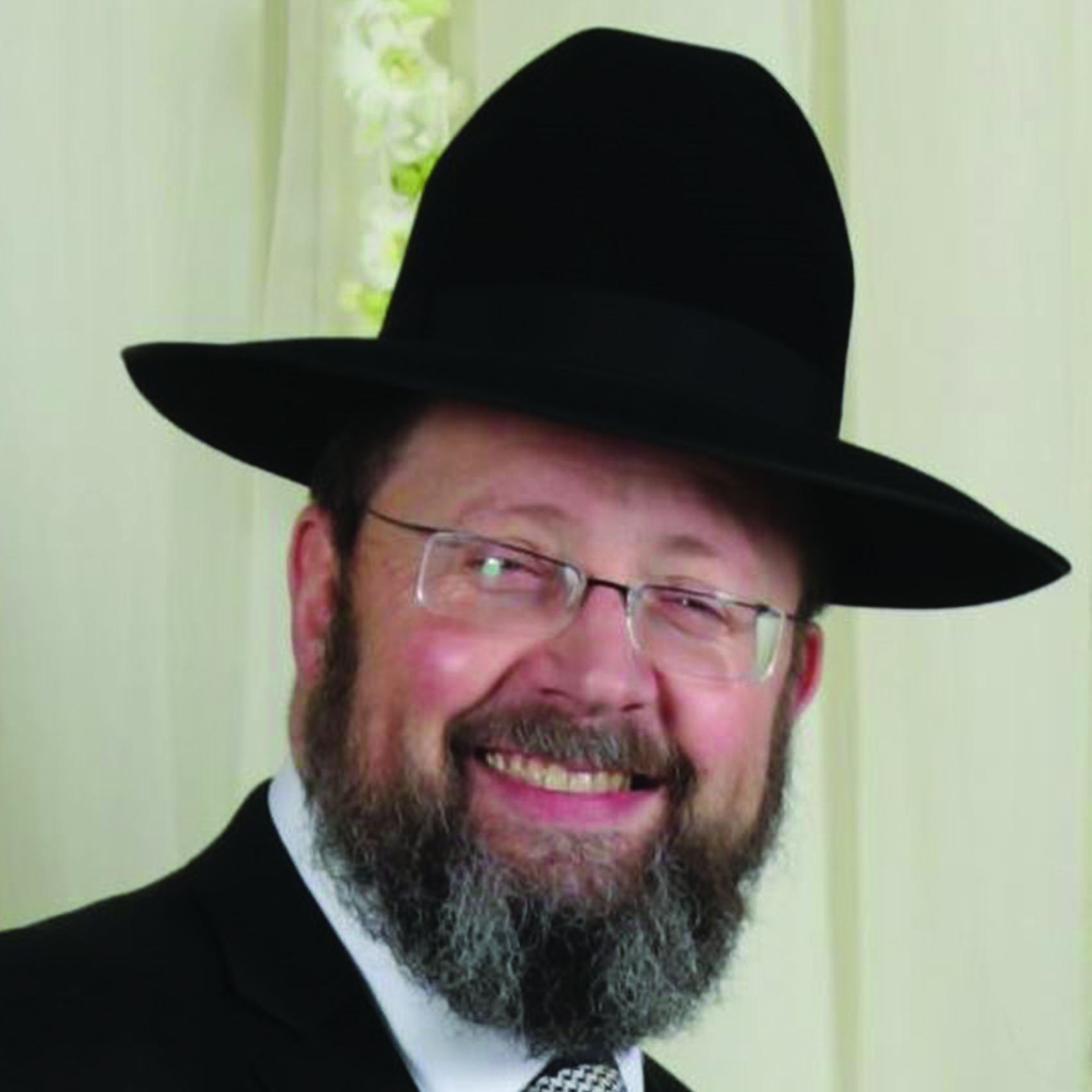Potent Antidote

W riting an article in a publication like this can be exhilarating or humbling depending on the feedback. My article about the spiritual danger of business trips several weeks ago spawned both emotions.
On one hand the sheer volume of discussion it provoked demonstrates that the topic was ripe for attention. On the other hand the feedback was a bit humbling because in suggesting various approaches to ameliorating the challenge I had somehow missed the biggest one of all. My blunder was pointed out to me in a soft but straightforward fashion by the indefatigable dynamo and mezakeh es harabim Rabbi Dovid Newman.
By now Reb Dovid is a household name having been featured on the cover of this magazine for his wildly successful V’Haarev Na program which encourages mesivta bochurim to “own” a masechta through multiple chazaros. Reb Dovid told me — and he is absolutely right — that the true antidote for the traveler is the panacea Hashem prescribed: “Barasi yetzer hara barasi Torah tavlin.” The Torah provides protection and deliverance from the yetzer hara. If baalei batim would “lig in lernen ” they would be protected from the yetzer hara’s snares.
Of course I knew this basic principle. So why had it not crossed my mind? Sadly because it did not seem realistic. Because even if a baal mishpachah is dedicated to his daily learning say to his daf how “areingetun” can he really be? The truly motivated may be but for many learning the daf or going to a shiur is a passive experience. A man who is a boss at work comes home fatigued and feels small as he sits at a shiur. How can we expect him to have a geshmak?
As Rav Meir Stern (cited in Esa Einai) points out a person is naturally drawn toward pleasure because he was created to enjoy the greatest pleasure of all — basking in the Shechinah’s presence. One who fails to satisfy this need for pleasure in this world through Torah study which mirrors the Olam Haba experience is automatically drawn toward illicit counterfeit pleasures. So it is primarily learning Torah with a geshmak that acts as a tavlin. I intuitively felt that to expect a working man to have such enjoyment in learning is unrealistic and therefore the protection of Torah tavlin would not apply.
How sad.
And after looking into the matter further I realized how completely and utterly untrue.
I reached out to programs that aim to infuse every person irrespective of his station and stage of life with a feeling that Torah is the central feature of his life — that which drives him and invests his life with meaning and excitement. I asked for testimonials with one criteria: they had to be given by those working not full-time learners.
DIRSHU famous for its accountability-based programs with a system of chazaros tests and rewards successfully promotes sophisticated kinyan haTorah be it in halachah mussar or Shas. Its programs have changed the learning landscape. Here is some of the feedback they have received.
• “I began learning daf yomi when I started working. When I realized that I was just going ‘veiter ’ I decided to take the tests. The test are mechayeiv a great amount of chazarah but when does one have time? I must tell you that kinyan haTorah has taught me how many hours there are in a Shabbos to learn. Shabbos has changed to a day of ‘Yismach Moshe b’matnas chelko!’”
• “I work in klal matters and have little time for myself. I’ve been wondering for years why my learning has not achieved the desired spiritual results. I have only scratched the surface of the Dirshu Mishnah Berurah program for the past 18 months and there I found the answer… I have learned that without knowing halachah you cannot serve Hashem plain and simple.”
• “It is difficult for me to express the hakaras hatov I feel to the entire Dirshu organization for providing me with such a strong sense of sipuk hanefesh and excitement for limud haTorah… I cannot describe the geshmak! Your program has made me realize the thrill and sense of chiddush haTorah that can come with a structured chazarah program…”
THERE ARE OTHER smaller programs as well. Reb Dovid Newman has recently started a program Kinyan Hamasechta which aims to do for baalei mishpachah what V’Haarev Na does for mesivta bochurim: to encourage its participants to chazer and chazer until they own the masechta until it becomes their “best friend.” The program has been up and running for about a year and a half now with some 250 baalei batim participating across the globe. And if the sampling I spoke to is representative the effect is nothing short of transformative. Its formula of being koneh a masecheta through writing into the Gemara and making it “chazerable ” which streamlines multiple chazaros has a truly profound effect. After hearing it over and over from so many participants it can only be described as magical. Some examples:
• “I just got up from shivah. During the week I found myself at the seforim shrank with tears in my eyes so sad that I could not take out ‘my’ Gemara Succah. I never could’ve imagined that it would bother me when I could not learn!”
• “As I headed for a conference in San Diego I decided to set the bar high for my flight (five and a half hours) — to chazer all of my ‘In-the-Bones’ blatt on this flight. I wasn’t sure if it would be possible but I set the goal nevertheless: Daf 2a–36b.With tremendous siyata d’Shmaya over the first three hours of the flight I got through 27 blatt half of the masechta! I feel so lucky and fortunate that I was zocheh to join this life-changing program.”
• “One Friday night I reviewed many dapim. When I finished I went into the kitchen — everyone was sleeping — and started dancing with such a great feeling. I would never have believed that mesikus haTorah was such a real thing!”
Speaking about the success of his program Reb Dovid shared a poignant insight: “A talmid does not care how much his rebbi knows until he knows how much his rebbi cares.” Following this creed each rosh chaburah of Kinyan HaMasechta is charged with creating a sense of family within his chevreh — and what does one not do for family? To this end the roshei chaburah are in touch throughout the day with their chevreh and the wives are included in the process as well with acknowledgments of their sacrifice. But as the women themselves quickly discover it is they who should be showing gratitude to the program as they observe the transformative effect on their husbands.
A THIRD SUCH PROGRAM Daf Hashavua in which the groups learn and review a weekly daf with emphasis on iyun and tests has similar appeal. Here are some of the testimonials they have received:
• “Daf HaShavua has been life changing for me… It encourages me to strive and work hard to own the daf I am so lucky to be associated to with such an amazing program.”
• “What a great feeling. One day off… having so much to take care of for Pesach and other pressing issues… I spent a half hour reviewing Beitzah 25 at night and then another hour reviewing Beitzah 26 then in the morning before Shacharis heard a shiur… on Beitzah 26 then after Shacharis reviewed Beitzah 25 once again and took the test! This would never have happened without Daf HaShavua! Now I’m really ready to start the day! And I can’t wait to review Beitzah 26 again tomorrow on Shabbos. (It’s quite difficult!)”
• “One night I got so into the test that couldn’t go to sleep until I finished the test. I was up until 2 a.m.!”
THE COMMON THEME in all these programs is that learning through multiple chazaros makes the Torah become alive exciting and tangible. And remember: All these testimonials are from working men many of whom had forgotten the mesikus of Torah or had never experienced it and are now thrilled and invigorated by their experience.
The Aruch Hashulchan writes that Klal Yisrael’s chomer (substance) was born on Pesach but its tzurah (lit. form — i.e. its identity) materialized on Shavuos when we received the Torah. The process of chomer assuming a tzurah is what we call shteiging. For example a rock has substance and form. For it to “shteig ” it annuls itself to the tzurah above — it can become part of a brick. If a brick “wants” to shteig it annuls its identity and becomes a part of a wall (the tzurah above it); if a wall wants to shteig it becomes part of a house and so on.
The period between Pesach and Shavuos was the greatest period of shteiging in Klal Yisrael’s history (49 levels in 49 days) as the chomer of the people walked toward their identity and destiny the Torah hakedoshah.
For us to start shteiging we have to take the first step. We must tell ourselves that our tzurah our present self-identity is not the end point; it is a rung on the ladder. We can’t just say “Hey this is who I am. I am an ehrlicher balabos but getting into learning is not just not my thing.” Such self-limiting thoughts are atzas hayetzer. We must use our present self to serve as the substance for a greater higher self. For being a more authentic Jew. A more Torahdik Jew. A more growing Jew.
Let’s begin shteiging.
It is never ever too late.
(Originally featured in Mishpacha Issue 662)
Oops! We could not locate your form.













